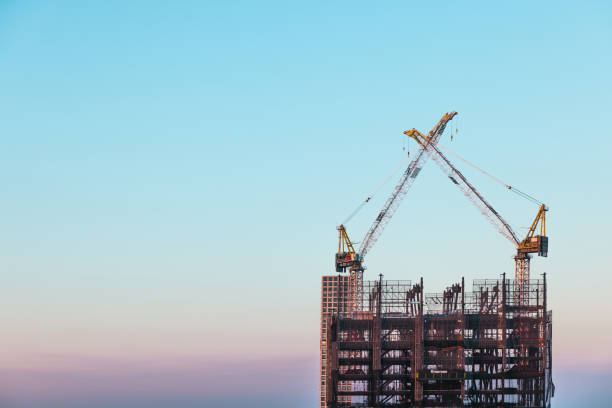Timber has been a trusted material in construction for centuries, valued for its strength, versatility, and eco-friendly properties. As we navigate an era of environmental responsibility and innovation, timber offers solutions that are as functional as they are sustainable. Whether you’re embarking on a home renovation or tackling a commercial building, incorporating timber into your project can provide lasting benefits for the environment, your budget, and design goals.
Also Read About: incestflix
Introduction to Timber in Construction
The Historical Use of Timber in Building
Timber has a rich history in construction. From ancient civilizations using wood to craft homes, temples, and boats to modern-day applications, its versatility has made it a cornerstone of architecture. Historical landmarks such as Japan’s Horyu-ji Temple, built in 607 AD, and medieval European timber-framed homes demonstrate timber’s longevity and aesthetic appeal.
Modern Innovations in Timber Construction
In the 21st century, timber construction has undergone a renaissance, driven by advances in engineering and sustainability. Engineered wood products like Cross-Laminated Timber (CLT) and Laminated Veneer Lumber (LVL) are transforming the way architects and builders approach timber structures. These innovations enable timber to compete with traditional materials like steel and concrete, offering strength, durability, and versatility.
Also Read About: digitalnewsalerts
Advantages of Using Timber in Construction
Timber’s Sustainability and Environmental Benefits
Renewable Resources and Carbon Sequestration
Timber is a renewable resource that, when responsibly sourced, contributes to environmental preservation. Unlike finite materials like concrete and steel, timber can be replenished through sustainable forestry practices. Additionally, trees absorb carbon dioxide during their growth, sequestering it within their fibers even after being harvested. This makes timber a key player in reducing the carbon footprint of construction projects.
Timber vs. Other Materials: Environmental Comparison
When compared to materials like concrete and steel, timber requires less energy to produce and emits significantly fewer greenhouse gases. For instance, the production of steel involves high-temperature smelting processes, whereas timber harvesting and processing use minimal energy. Opting for timber over other materials supports eco-conscious construction practices and contributes to global climate goals.
Strength and Durability of Timber
Engineered Wood Products for Enhanced Performance
Modern timber products, such as CLT and Glulam (glue-laminated timber), are engineered to offer exceptional strength and stability. These materials are highly resistant to warping and splitting, making them ideal for structural applications like beams, walls, and flooring.
Also Read About: pondershort.com
Timber’s Resistance to Natural Disasters
Timber construction can also be adapted to withstand natural disasters. Properly treated timber resists moisture, pests, and rot, while its natural flexibility allows it to absorb and dissipate seismic energy during earthquakes. These qualities make it a reliable choice in disaster-prone regions.
Aesthetic and Design Flexibility
Versatility in Architectural Styles
Timber lends itself to a wide range of architectural styles, from rustic log cabins to sleek, minimalist designs. Its natural grain and warm tones create an inviting atmosphere, while its ability to be cut and shaped allows for intricate detailing and unique structural elements.
Creating Warm and Inviting Spaces
Timber’s natural properties make it an excellent choice for creating cozy and inviting interiors. It enhances the ambiance of living spaces, promotes a sense of calm, and even has biophilic benefits, connecting occupants to nature.
Cost-Effectiveness of Timber
Lower Material and Transportation Costs
Compared to heavy materials like steel and concrete, timber is lightweight, reducing transportation costs. Additionally, its availability in many regions makes it a cost-effective material for both small-scale and large-scale projects.
Long-Term Maintenance and Repair Benefits
Timber is easy to repair and maintain, often requiring simple treatments to extend its lifespan. Unlike concrete or steel, which may need specialized repair techniques, timber can often be restored using basic tools and materials.
Also Read About: internetchicks
Types of Timber Suitable for Construction
Hardwood vs. Softwood: Which One to Choose?
Characteristics of Popular Hardwoods
Hardwoods like oak, teak, and mahogany are prized for their durability and elegance. They are commonly used in high-end projects requiring strength and a luxurious appearance, such as flooring, furniture, and decorative paneling.
Softwoods for Speed and Affordability
Softwoods like pine, cedar, and spruce grow quickly, making them an affordable and sustainable choice for construction. These timbers are lightweight and easy to work with, ideal for framing and other structural components.
The Rise of Engineered Timber Products
Cross-Laminated Timber (CLT): A Revolutionary Material
CLT is a game-changer in modern construction. Its layered structure provides immense strength and stability, enabling it to support large loads and serve as a viable alternative to steel and concrete in skyscrapers and bridges.
Laminated Veneer Lumber (LVL) for Structural Integrity
LVL combines multiple layers of wood veneers bonded together to create a material that resists bending and warping. It’s often used in beams, headers, and other load-bearing applications, ensuring reliability in demanding conditions.
Applications of Timber in Construction
Timber Framing for Residential and Commercial Projects
Timber framing is a classic construction method that remains popular for its simplicity and strength. Whether building single-family homes or large commercial spaces, timber frames provide a durable and aesthetically pleasing solution.
Timber in Interior Design and Décor
From ceiling beams and wall paneling to furniture and flooring, timber adds charm and sophistication to interiors. Its natural beauty enhances both modern and traditional design styles.
Mass Timber in Skyscrapers and Large-Scale Projects
Mass timber is paving the way for sustainable high-rise buildings. Projects like the Mjøstårnet tower in Norway showcase the potential of timber to revolutionize urban architecture while reducing environmental impact.
Challenges of Using Timber in Construction
Addressing Timber’s Susceptibility to Pests and Decay
While timber is vulnerable to termites and rot, proper treatments and finishes can protect it from these threats. Modern wood preservatives and sealants ensure longevity, even in harsh environments.
Fire Safety Considerations and Solutions
Fire resistance is a common concern for timber, but advancements in fire-retardant treatments and construction techniques have mitigated this risk. Engineered timber often surpasses expectations in fire safety tests, maintaining structural integrity during prolonged exposure.
Meeting Building Code Regulations for Timber Structures
Building codes can vary, but timber construction is increasingly being recognized in regulations worldwide. Adopting engineered timber products and adhering to safety standards ensures compliance in most jurisdictions.
Also Read About: maxxfour.com
FAQs About Using Timber in Construction
- What Makes Timber Environmentally Friendly?
Timber is a renewable resource, sequesters carbon, and has a lower carbon footprint compared to materials like steel and concrete. - Is Timber Strong Enough for Modern Construction?
Yes, engineered timber products like CLT and Glulam offer remarkable strength, making them suitable for a wide range of applications. - How Does Timber Compare to Concrete or Steel?
Timber is lighter, more sustainable, and often more cost-effective while offering comparable strength for many projects. - Can Timber Be Used in High-Rise Buildings?
Absolutely. Mass timber products are transforming skyscraper construction with projects like the Mjøstårnet tower. - What Are the Maintenance Needs for Timber Structures?
Timber requires regular sealing or staining to protect against moisture and pests, but maintenance is straightforward and cost-effective. - Are There Affordable Timber Options for Small Projects?
Softwoods like pine and cedar are budget-friendly choices, offering versatility and sustainability.
Conclusion: Embracing Timber for a Sustainable Future
Timber offers a compelling combination of sustainability, versatility, and cost-effectiveness. By choosing timber for your next construction project, you’re investing in a material that respects the environment, supports innovative design, and ensures long-term reliability. The future of construction is sustainable, and timber is leading the way.





